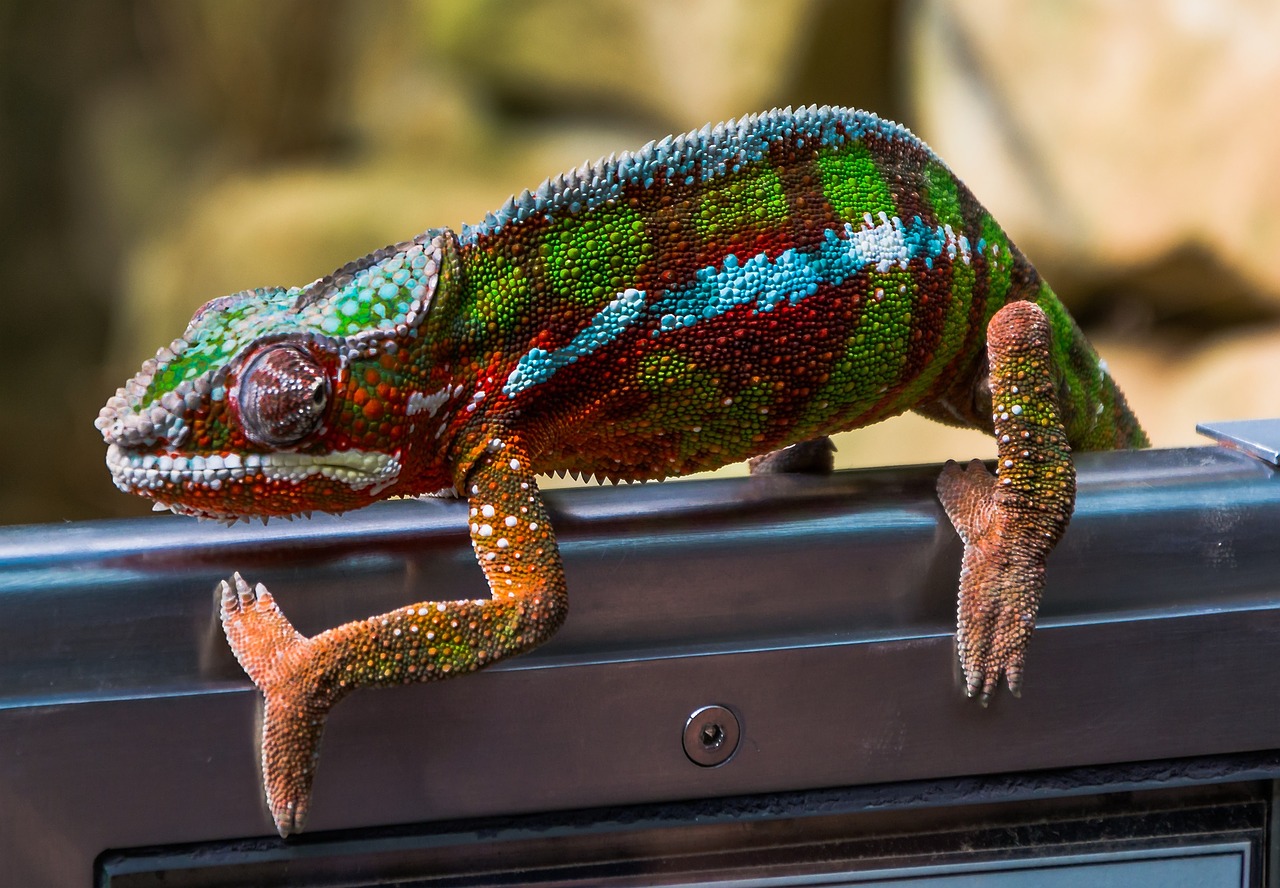Chameleons are one of the coolest reptiles around. They have been featured in many live-action films and cartoons as lizards who can change their color depending on their background. But those portrayals are actually exaggerated. There are different reasons chameleons change their color. And they’re more than just cool color-changing lizards. They are very fascinating creatures and have unusual methods when hunting for prey.
Did you know?
Since there’s so much more to a chameleon than its ability to change colors, here are some chameleon facts which you’ll find interesting. These are cool trivia about the ever-so-adorable lizard which you can share with family or friends. It’s always just good to know more about animals, because, with every creature, they do have a purpose in our ecosystem. So read on to find out more.
Changing colors
It’s already a known fact that chameleons can change their colors. But it’s not actually because of their background. Sure, they can camouflage themselves with their color, but it’s not like how they are portrayed in movies and cartoons, where they change their color immediately once they’re put in a new background. Chameleons change their color to express their moods. They have chromatophores which are colorful pigments on their skin. This results in their skin producing different colors to show their moods.
Body heat
Chameleons, just like most other reptiles, cannot produce their own body heat. They are “ectotherms” which means that their body temperature depends on their environmental heat source. The outer layer of a chameleon’s skin is transparent while several layers underneath it lie the chromatophores. Changing their colors also means that they’re adjusting to the temperature around them. They change to a darker shade when the temperature is warm.
Keeping them as pets
Chameleons can actually be kept as pets, but they are challenging to maintain. These animals aren’t for first-time pet keepers because of their specific needs. As we’ve mentioned previously that they can rely on their environment for heat.
This means that, if you do plan on keeping them as pets, they need a heat source like a basking bulb to keep them warm. Just make sure that you get them from reputable breeders with permits or proper documents. Taking a wild chameleon from their natural habitat is illegal. Also, double-check with the rules and regulations of your region whether or not you can keep them as pets.
Different species
There are over 200 species of chameleons, nine of them are listed as critically endangered, while 37 of them are already endangered. Around 20 of their species are also vulnerable to be endangered. The veiled chameleon species is the most common to be kept as a pet.
They have a cone-shaped head and are mostly green with stripes that have a variety of colors. The females can grow up to only about 35 centimeters, while the males are larger at around 61 centimeters. While almost all other chameleon species are not social, the pygmy chameleon can be housed with other chameleons.
This sets them apart from the rest. And one of the most colorful species of chameleons is the panther chameleon which is native in the Northern and Eastern parts of Madagascar. Their colors range from vibrant green to blue, to orange to red! They are quite large since they can grow up to 20 inches long and can live from five to seven years.
The chameleon tongue and eyes
A chameleon’s tongue is very interesting because it’s how they hunt for food. Their tongues are long and sticky so when they see a prey, they will aim at it with their tongue that extends to twice the length of their body! They are able to capture their prey with precision.
On the other hand, their eyes are just as interesting as their tongue. Their eyes are monocular and binocular. Monocular means they can use each eye separately, while binocular means they can see a single three-dimensional image of their surroundings. This makes them one of the most sensitive and responsive reptiles.
Cool lizard!
And those are five cool facts about chameleons for you! Aren’t they just interesting colourful lizards?
Aside from their cuteness and ability to change colours, there’s so much more to them. Just like every living creature, a chameleon has its unique ways of living its life.
Each animal has a respective purpose for the environment, and with a lot of chameleon species being endangered or vulnerable, we must respect them and do our part to help them be safe. There is a lot of poaching for chameleons, but as we’ve mentioned above, keeping them as pets is alright as long as they are permitted and with proper documents.
Chameleons, just like any naturally wild animal, are very sensitive. Meeting their specific needs is important. With that, we hope our article entertained you and has made you learn more about this fascinating creature, now it’s time to share these facts with others too!






